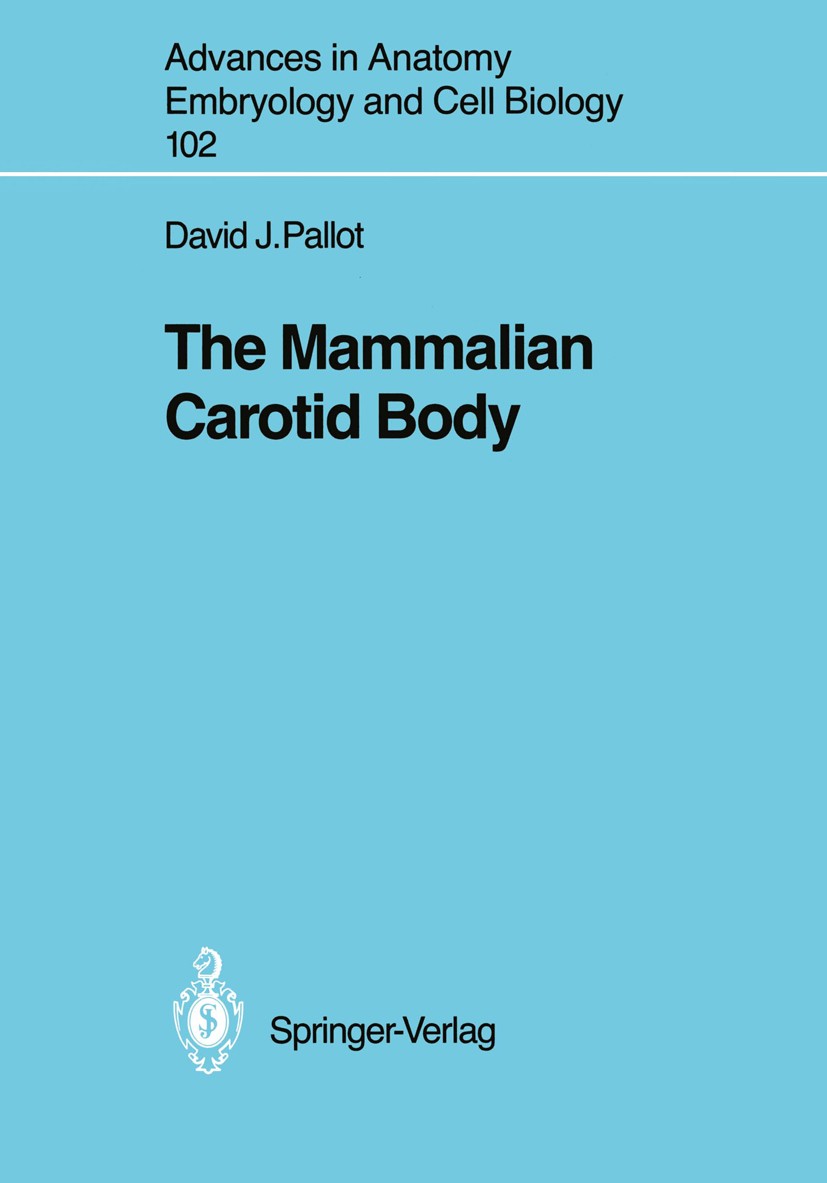| 书目名称 | The Mammalian Carotid Body | | 编辑 | David J. Pallot | | 视频video | http://file.papertrans.cn/914/913528/913528.mp4 | | 丛书名称 | Advances in Anatomy, Embryology and Cell Biology | | 图书封面 |  | | 描述 | According to Valentin (1833) and Luschka (1862), the first description of the structure now known as the carotid body must be ascribed to a Swiss physiolo gist - Albrecht von Haller - who, in 1762, called it the ganglion exiguum. This claim, however, may be erroneous, for Tauber (1743) described a struc ture at the bifurcation on the common carotid artery and called it the ganglion minutum. Andersch (1797) reprinted the text of a study made by his father between 1751 and 1755. The original printing of this work had apparently been sold as waste paper! Andersch called the organ the ganglion intercaroticum on account of its location. He also specifically stated that the sympathetic chain, the glossopharyngeal and the vagus nerves sent branches into the organ. For a while the carotid body remained forgotten, to be rediscovered in 1833 by Mayer of Bonn who again remarked upon the branches of the sympathetic, glossopharyngeal and vagus nerves as sources of a nerve plexus which innervated the ganglion intercaroticurtl. . Valentin (1833) clearly regarded the structure as part of the sympathetic nervous system, although he too recognised that the vagus and glossopharyngeal nerves contrib | | 出版日期 | Book 1987 | | 关键词 | cell; metabolism; nervous system; pathology | | 版次 | 1 | | doi | https://doi.org/10.1007/978-3-642-71857-1 | | isbn_softcover | 978-3-540-17480-6 | | isbn_ebook | 978-3-642-71857-1Series ISSN 0301-5556 Series E-ISSN 2192-7065 | | issn_series | 0301-5556 | | copyright | The Editor(s) (if applicable) and The Author(s), under exclusive license to Springer-Verlag GmbH, DE |
The information of publication is updating

|
|
 |Archiver|手机版|小黑屋|
派博传思国际
( 京公网安备110108008328)
GMT+8, 2025-12-30 09:39
|Archiver|手机版|小黑屋|
派博传思国际
( 京公网安备110108008328)
GMT+8, 2025-12-30 09:39


